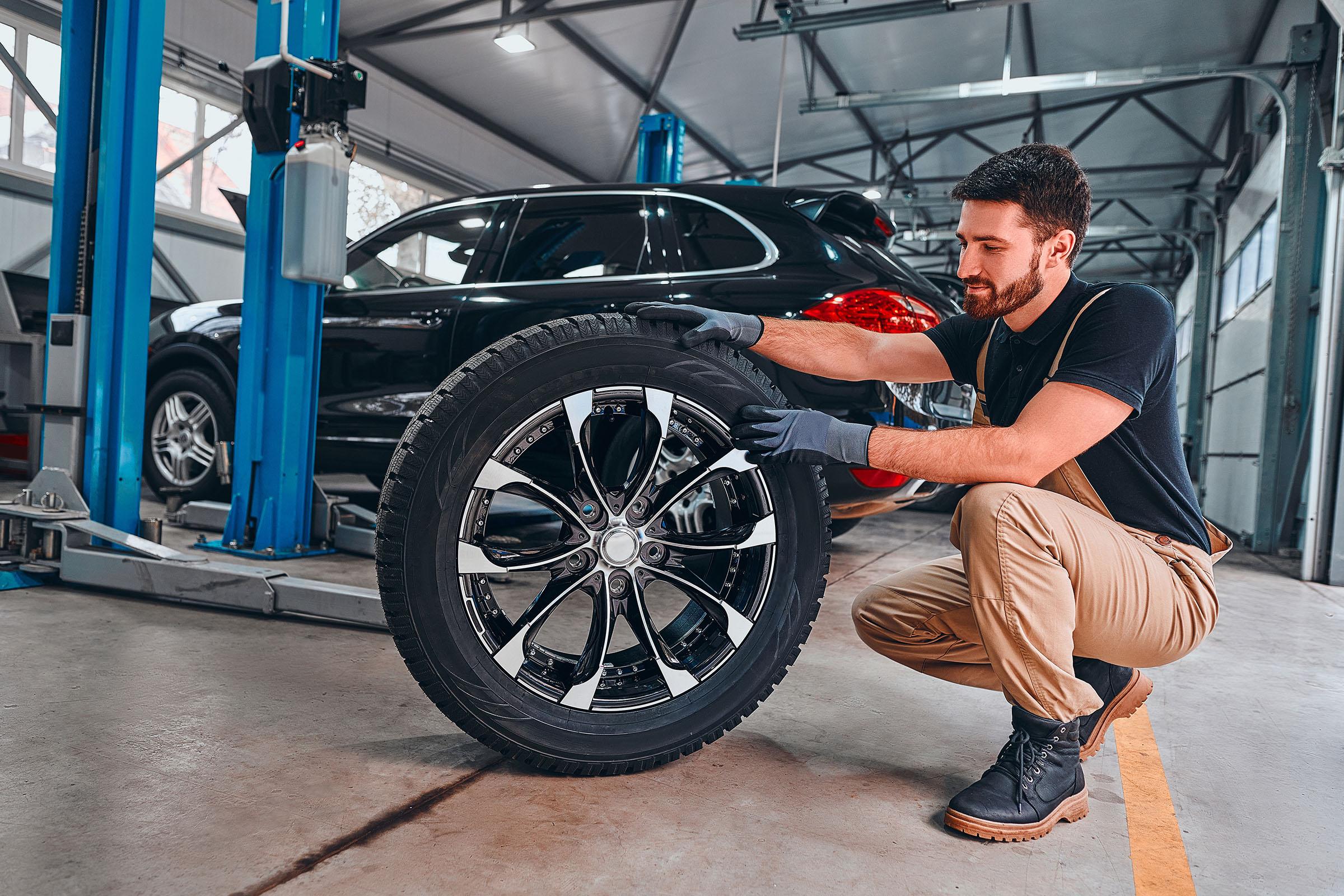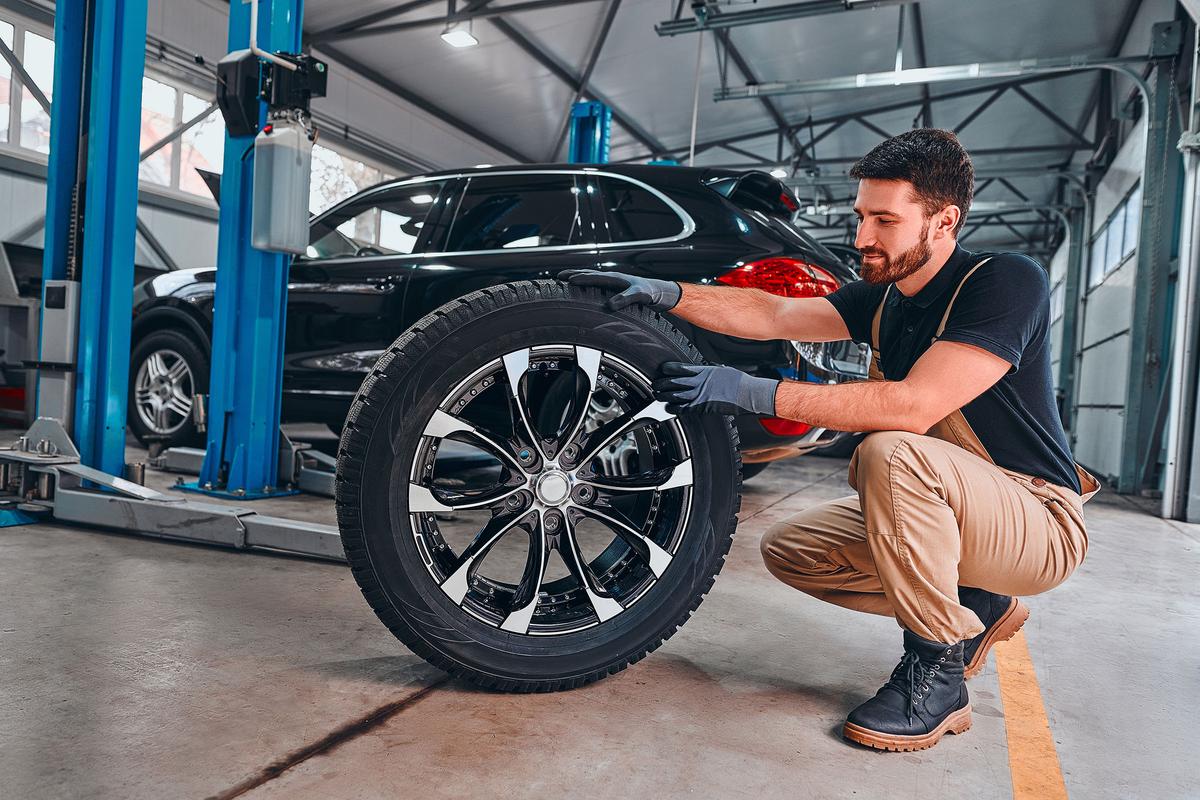

Tires are one of the most important safety features on your car, yet many drivers choose the cheapest option to save money. While budget tires may seem like a quick fix, premium tires often provide better performance, safety, and long-term value. This blog explores the differences in the debate of budget tires vs. premium tires, when each type makes sense, and how Snap Finance can help drivers upgrade without the stress of large upfront payments.
Takeaways:
Budget tires save money upfront but often wear out faster and perform worse in tough conditions.
Premium tires cost more initially, but they can deliver better safety, fuel efficiency, and long-term savings.
Snap Finance offers convenient lease-to-own financing so drivers can upgrade to premium tires without paying all at once.
Tires do more than keep your car rolling. They affect your safety, fuel economy, and driving experience. Still, many drivers pick the cheapest option when it’s time for replacements. At first, that decision feels smart for your wallet, but the wrong tires can cost you more in the long run.
Understanding the differences between budget and premium tires can help you choose what’s right for your vehicle, your driving habits, and your budget.
What are budget tires?
Budget tires are no-frills tires designed to meet basic driving needs. They’re the least expensive option on the market and often attract drivers who need replacements quickly or who are on tight budgets.
The main advantage is the lower upfront cost. For someone with limited funds, that can make the difference between getting back on the road or being stuck.
But there are trade-offs. Budget tires usually wear out faster, may provide less traction in rain or snow, and often don’t hold up well under high mileage. If you live in a mild climate or only drive occasionally, they can work fine. But for more demanding driving, the weaknesses can show up quickly.
What are premium tires?
Premium tires come from leading brands and often feature advanced designs for safety and performance. They’re priced higher, but the difference isn’t just about the name.
Premium tires often last longer thanks to better tread materials and designs. They provide better traction and handling, which means shorter braking distances and improved safety in wet or icy conditions. Some also boost fuel efficiency, saving you money at the pump.
The main downside is cost. For drivers with limited mileage or predictable conditions, premium tires might feel unnecessary. But for frequent drivers or families, the benefits often outweigh the higher price tag.
Safety and performance differences
When comparing budget tires vs. premium tires, safety and performance are where the biggest gaps appear. Premium tires are designed to grip the road better, especially during sudden stops, sharp turns, or wet weather. This can mean a shorter braking distance or avoiding a slide on icy pavement.
Budget tires, while safe for basic use, often fall short in these same conditions. That means a greater chance of skidding, hydroplaning, or needing longer distances to stop. Those extra seconds can make a big difference in avoiding an accident.
Poor tire performance can also bring hidden costs. More wear and tear on your brakes, suspension, and fuel efficiency adds up over time. So while budget tires save upfront, they may lead to more expenses later.
Longevity and total cost of ownership
At first glance, budget tires seem like the cheaper choice. But once you factor in how often you’ll need to replace them, the cost per mile can be higher in the long run.
For example, if budget tires last 20,000 miles while premium tires last 50,000 miles, the premium set spreads its cost over more miles. That means fewer replacements, fewer trips to the tire shop, and more long-term savings.
Premium tires may also improve fuel economy slightly, giving another small but steady return on investment. Over years of driving, those savings add up.
When budget tires make sense
Budget tires still serve a purpose. They can be the right fit in some situations:
Short-term use: If you’re returning a leased vehicle soon, you may not need long-lasting tires.
Low annual mileage: If you only drive a few thousand miles a year, budget tires may meet your needs.
Mild climates: Drivers in areas without harsh winters or heavy rain may not notice performance differences as much.
In these cases, budget tires can be a reasonable, practical choice.
When premium tires are worth it
For many drivers, premium tires make more sense in the long run. They’re especially valuable if:
You drive often. Families, commuters, or road-trippers benefit from the longer lifespan.
You face harsh weather. Snow, ice, or heavy rain highlight the safety benefits of better tires.
You value long-term savings. Fewer replacements and better fuel efficiency offset the upfront price.
If safety, comfort, and durability are priorities, premium tires are often the smarter investment.
Financing options: Bridging the gap
The biggest challenge with premium tires is paying for them upfront. But safety shouldn’t be something you sacrifice because of cost.
That’s where Snap Finance comes in. With lease-to-own financing, drivers can take home premium tires today and pay over time through convenient payments. All credit types are welcome to apply,1 and thousands of partner retailers make finding the right set simple. Plus, with early ownership options, you can complete your lease sooner and save on overall lease costs.2
This approach makes it easier for families and drivers to prioritize safety without derailing their monthly budget.
Smarter tire choices lead to safer roads
Choosing between budget tires vs. premium tires isn’t just about saving money today – it’s about safety, performance, and long-term value. While budget tires work in some cases, premium tires often deliver peace of mind and lower costs over time.
Apply online for Snap Finance’s lease-to-own financing today to upgrade your tires and keep your family safe on the road.
The advertised service is a lease-to-own agreement provided by Snap RTO LLC. Lease-to-own financing is not available to residents of Minnesota, New Jersey, and Wisconsin.
1 Not all applicants are approved. While no credit history is required, Snap obtains information from consumer reporting agencies in connection with applications, and your score with those agencies may be affected.
2 The default payment plan is the Maximum-Term Plan, which includes 12- to 18-month renewable terms and is your highest cost option. To exercise an early ownership option, including any early buyout promotions, you must make all regular payments on time and ensure the required amount is paid within the applicable timeframe through the customer portal or by contacting Customer Care at 1-877-557-3769. Early buyout promotions may include a cost of lease above the merchandise price. For details and limitations, including relating to applicable early ownership options, refer to your lease agreement.